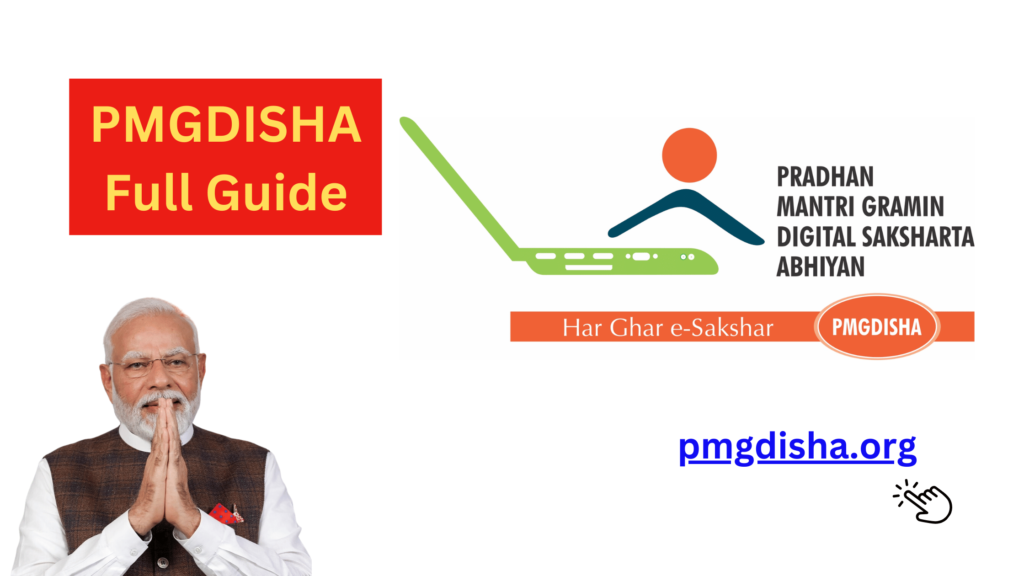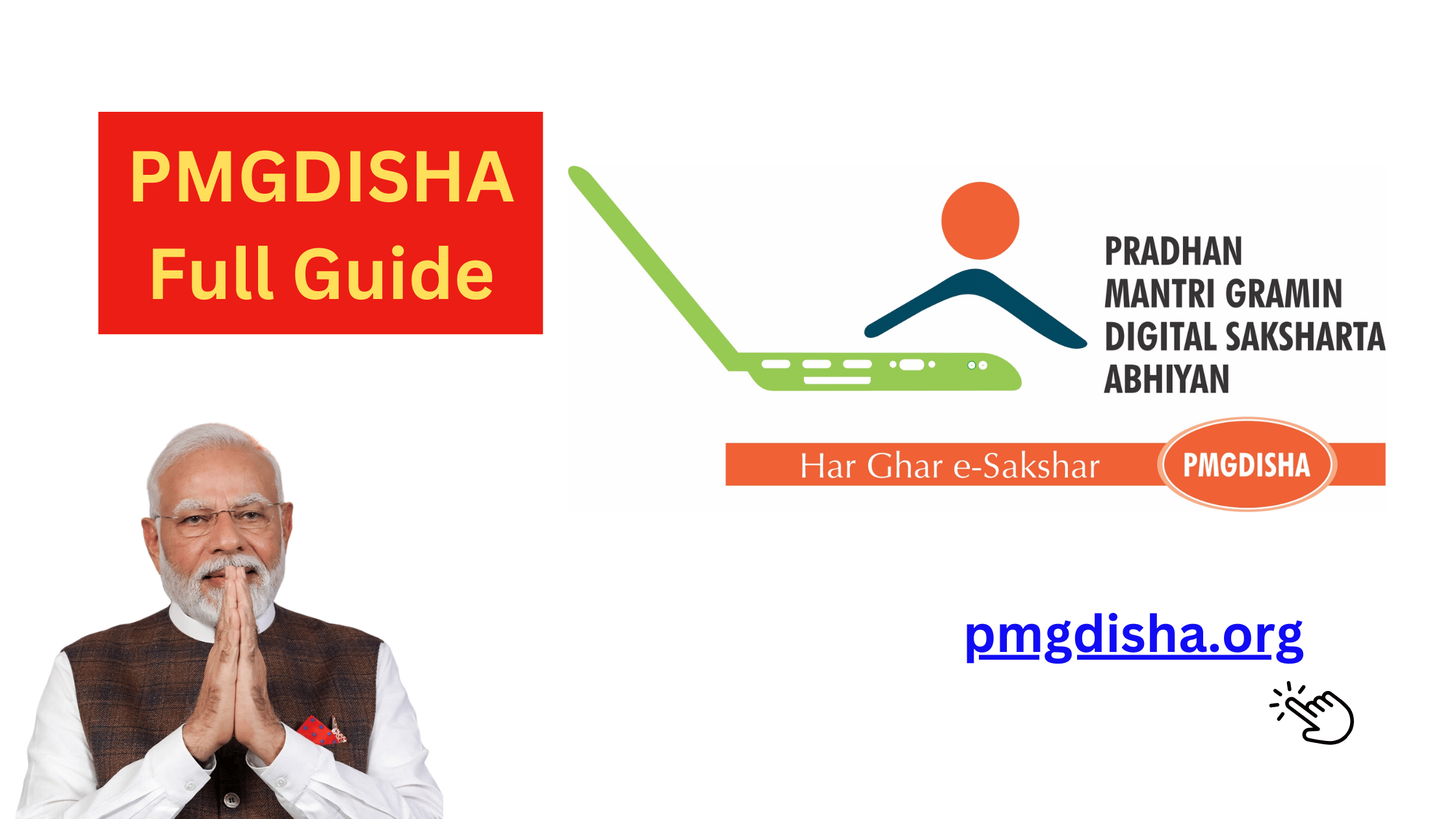The Pradhan Mantri Gramin Digital Saksharta Abhiyan (PMGDISHA) is one of India’s most transformative initiatives aimed at bridging the digital divide between urban and rural populations. In a country where millions of people, especially in rural areas, still lack basic digital literacy skills, PMGDISHA aims to make citizens in rural India digitally empowered. By enabling rural citizens to access digital tools, resources, and opportunities, the scheme helps enhance their personal, social, and professional lives.
This blog delves into everything you need to know about PMGDISHA, from its inception to its implementation, objectives, eligibility criteria, and much more.
What is PMGDISHA?
Launched in 2017 by the Government of India under the Ministry of Electronics and Information Technology (MeitY), PMGDISHA is a nationwide digital literacy initiative aimed at providing digital literacy to rural citizens. The goal is to make 6 crore (60 million) rural households digitally literate by the end of the scheme. The programme targets people aged 14 to 60 in rural areas and aims to empower them with essential digital skills that can enhance their quality of life.
Through this program, the government seeks to ensure that every individual in rural India can access information, connect with others online, and perform basic digital transactions. PMGDISHA helps participants acquire skills ranging from using the internet to online banking, email communication, and digital content creation.
Objectives of PMGDISHA
The primary objectives of the PMGDISHA initiative include:
- Digital Literacy for Rural India: Provide digital literacy to citizens in rural areas, empowering them to use information technology for communication, education, and economic activities.
- Inclusive Growth: Empower individuals with digital skills that contribute to their personal, social, and economic development, thus promoting inclusive growth.
- Social and Economic Empowerment: Provide access to government schemes, banking services, online education, and job opportunities to enhance the lives of citizens in rural regions.
- Promote Digital Services: Familiarize citizens with the use of digital tools and services, such as e-governance, e-commerce, and online health services.
- Narrow the Digital Divide: Bridge the gap between urban and rural populations in terms of access to and use of technology.
Key Features of PMGDISHA
- Free Training: The PMGDISHA program offers free training to eligible individuals in rural areas. The training includes hands-on experience with digital devices, the internet, and government services.
- Self-Enrollment: Individuals can self-enroll for the program through the official PMGDISHA portal. They can also visit their local Common Services Centres (CSCs) for enrollment.
- Wide Coverage: The program targets citizens in rural areas, specifically those who have little to no knowledge of digital technology. It covers 6 crore individuals across India.
- Certification: Upon successful completion of the training, participants are awarded a certificate, which helps recognize their newfound digital skills.
- Training Duration: The training typically lasts for about 20 hours, which is spread over a period of time depending on the learner’s convenience.

Eligibility Criteria for PMGDISHA
The eligibility criteria for enrolling in the PMGDISHA program are as follows:
- Age Group: The participant must be between the ages of 14 and 60 years.
- Rural Residence: The participant must be a resident of rural India, as defined by the Government of India. This includes individuals living in rural areas, villages, and semi-urban locations.
- No Prior Digital Literacy: The program is designed for individuals with little to no prior digital literacy. This ensures that the program targets those who have not had the opportunity to use technology before.
- No Educational Restrictions: There are no formal educational requirements to participate. Individuals from all educational backgrounds can join the program.
- One Member per Household: To ensure inclusivity, only one member per household can enroll in the program.
How to Enroll in PMGDISHA?
The process to enroll in the PMGDISHA program is simple and can be done through the following steps:
Step 1: Visit a Common Services Centre (CSC)
To start, you need to visit a local CSC, which serves as the enrollment center for PMGDISHA. These centers are located across rural India, offering a wide range of services, including digital literacy training.
Step 2: Self-Enrollment on the PMGDISHA Portal
Alternatively, you can self-enroll by visiting the official PMGDISHA portal (www.pmgdisha.in). Enter your personal details, including name, address, age, and mobile number. You will also be asked to upload proof of identity (such as Aadhaar) and proof of address.
Step 3: Complete the Training
Once enrolled, the candidate is required to complete the training provided by the CSC. The training is practical and covers topics such as:
- Basic Computer Skills: Introduction to computers, using a keyboard and mouse, understanding the operating system.
- Internet Navigation: How to use a web browser, search for information, and use email.
- Government Services: Introduction to government digital services, online portals, and schemes.
- Digital Payments: Learning how to use digital wallets, bank accounts, and perform online transactions.
- Cybersecurity Awareness: Basic concepts of online safety and data privacy.
Step 4: Certification
After completing the training, the participant is tested on the skills they’ve acquired. Upon successful completion of the test, the candidate is awarded a PMGDISHA certificate. The certificate is stored in DigiLocker, a government platform for digital document storage.
Training Content and Topics Covered in PMGDISHA
The training focuses on essential skills needed to thrive in the digital world. Some of the topics covered in the training include:
- Introduction to Computers:
- The basics of a computer system.
- How to operate a computer, including using the mouse and keyboard.
- Use of the Internet:
- How to browse the internet using web browsers like Google Chrome or Mozilla Firefox.
- Searching for information online using search engines.
- Sending and receiving emails.
- Digital Government Services:
- How to access government portals like the Digital India platform.
- Understanding e-Governance services, such as applying for ration cards, birth certificates, and more.
- Digital Transactions:
- Using mobile banking applications.
- Making online payments and transfers through services like UPI (Unified Payments Interface), mobile wallets, and net banking.
- Cybersecurity Awareness:
- Understanding the risks of online activities.
- Learning how to protect oneself from online threats such as phishing, malware, and cyberbullying.
- Use of Online Education Resources:
- Accessing online education platforms like SWAYAM and NPTEL for learning new skills.
Impact of PMGDISHA on Rural India
PMGDISHA has had a profound impact on rural India, helping citizens gain digital literacy and access services that were previously out of their reach. The major impacts of PMGDISHA include:
- Improved Access to Government Services: Citizens can now easily access government services, such as applying for Aadhaar cards, ration cards, and pension schemes, without the need to travel to government offices.
- Enhanced Employment Opportunities: With digital skills, rural citizens can now apply for jobs online, access e-commerce platforms to start businesses, and learn new skills through online courses.
- Social Empowerment: Digital literacy enables people to communicate with others, stay connected with family members through social media, and access information that can improve their social life.
- Improved Financial Inclusion: Digital literacy has facilitated financial inclusion by enabling rural citizens to use banking apps, make digital transactions, and access financial services.
- Reduction in the Digital Divide: PMGDISHA has narrowed the gap between urban and rural areas in terms of digital access, contributing to the overall progress of the nation.
Challenges Faced by PMGDISHA
While PMGDISHA has made significant strides in rural digital literacy, there are still challenges to overcome:
- Internet Connectivity: Poor internet connectivity in remote areas limits the effectiveness of the training and access to online resources.
- Lack of Awareness: Many rural citizens are still unaware of the PMGDISHA program and its benefits.
- Digital Infrastructure: In some areas, the lack of digital infrastructure and devices such as computers or smartphones makes it difficult for citizens to access training.
- Skepticism Toward Digital Literacy: Some individuals in rural areas may be hesitant to embrace digital technology due to fear of scams or a lack of trust in online platforms.
Conclusion
PMGDISHA is a landmark initiative by the Government of India to bridge the digital divide between rural and urban populations. By empowering rural citizens with digital skills, the program aims to enhance their access to information, government services, and economic opportunities. While challenges remain, PMGDISHA is gradually transforming rural India, enabling millions of people to participate in the digital economy and access resources that can improve their lives.
As more and more people complete the PMGDISHA training, it is expected that the country will witness a digital revolution in its rural regions, paving the way for a more inclusive, tech-savvy future for all.
